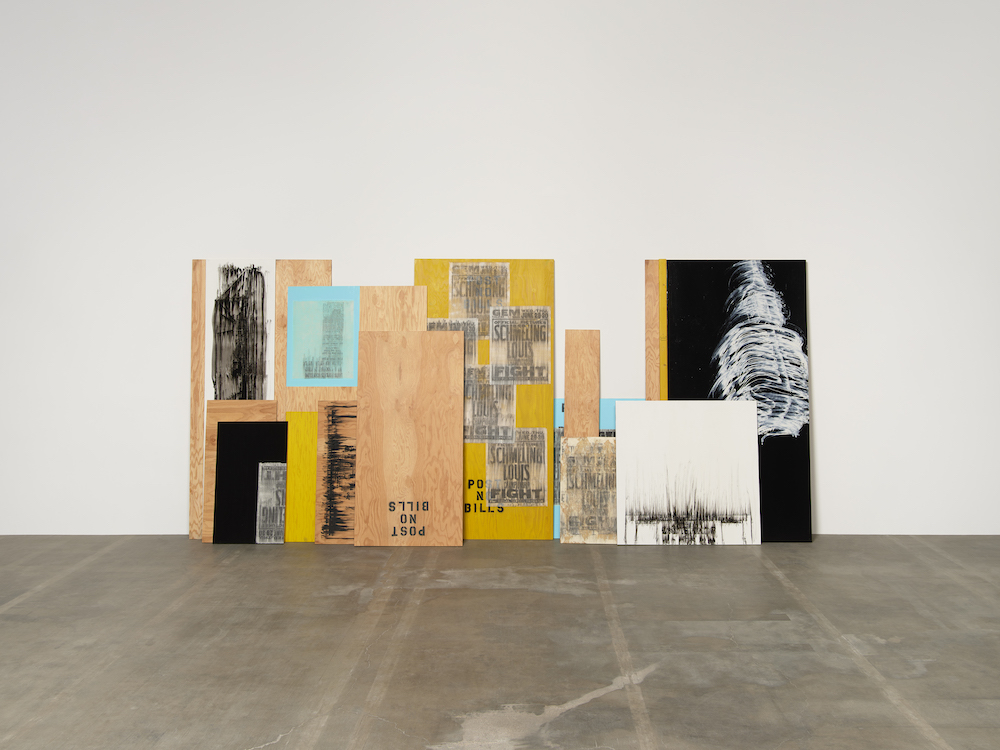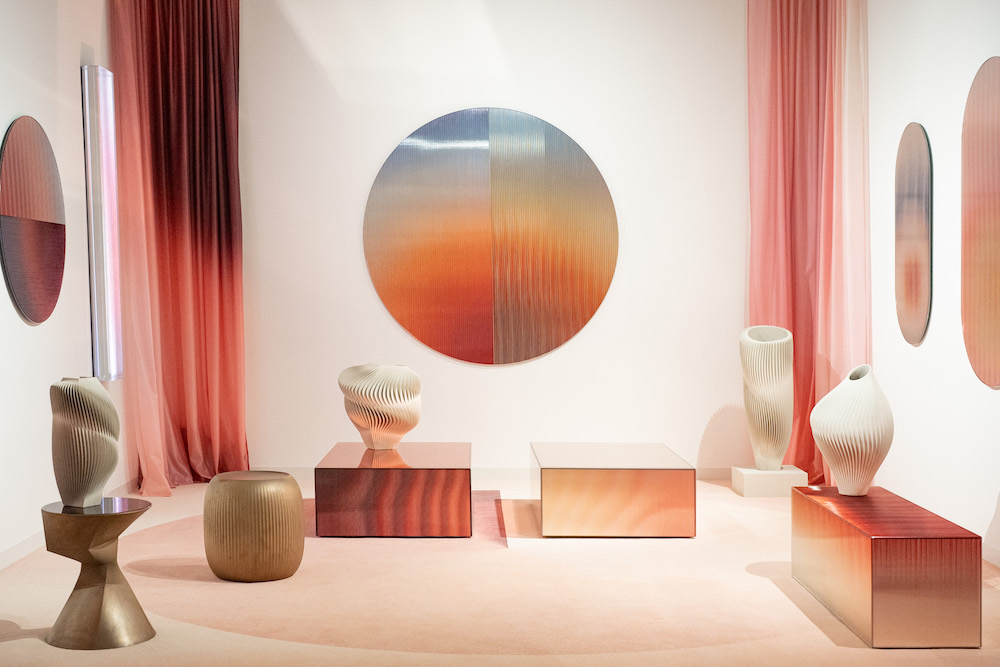Gary Simmons’ survey show travels to the Pérez Art Museum Miami
“Gary Simmons: Public Enemy” opens at the Pérez Art Museum Miami (PAMM) on December 5. On view through April 28, 2024, it was co-organized with the Museum of Contemporary Art Chicago and is the first comprehensive career survey of work by the artist. More than 70 works come together to look chronologically at Simmons’s practice and themes exploring the missing Black body, cultural arenas, the politics of pedagogy, Hollywood archetypes, and more. The show’s curator, René Morales, shared with Whitewaller about what to expect from “Public Enemy.”
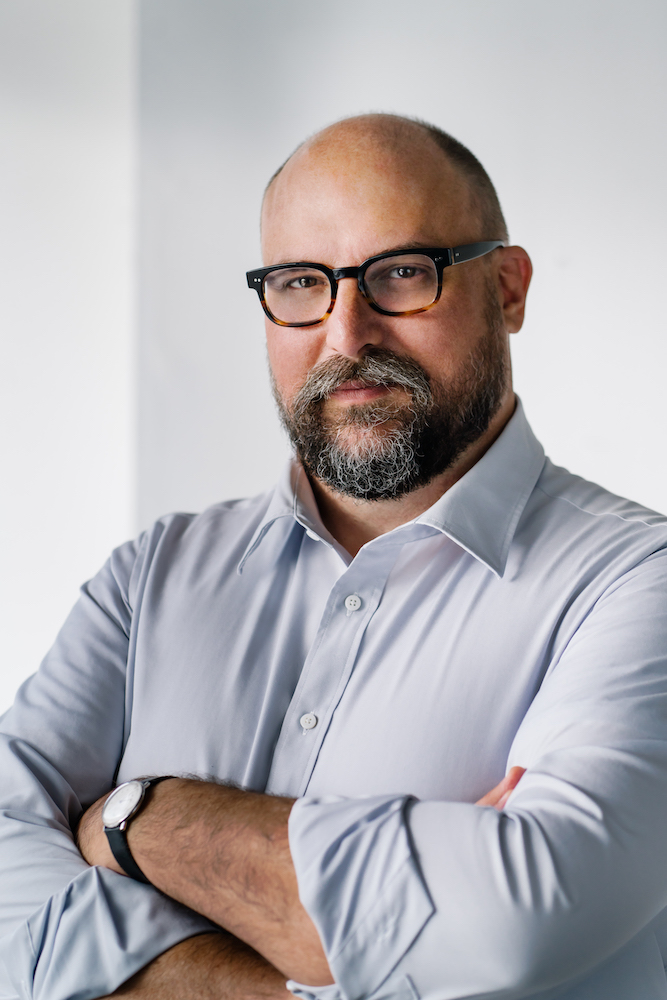
René Morales, photo by Karli Evans.
WHITEWALLER: What was the starting point for “Gary Simmons: Public Enemy”?
RENÉ MORALES: I first started talking about a survey with Gary back in 2014, when I commissioned him to create a wall drawing for PAMM’s soaring, double-height space, titled Frozen in Time. It so happened that PAMM’s then-future director, Franklin Sirmans, is among Gary’s oldest collaborators, going back decades, so he was all for the idea of giving him a proper retrospective. When I became chief curator at Museum of Contemporary Art Chicago, I joined the institution that had co-organized Gary’s largest exhibition to date, back in 2001, so there was this beautiful circularity revolving around a shared devotion to Gary’s work and a strong sense that this project would be both timely and long overdue. It’s like it was meant to be.
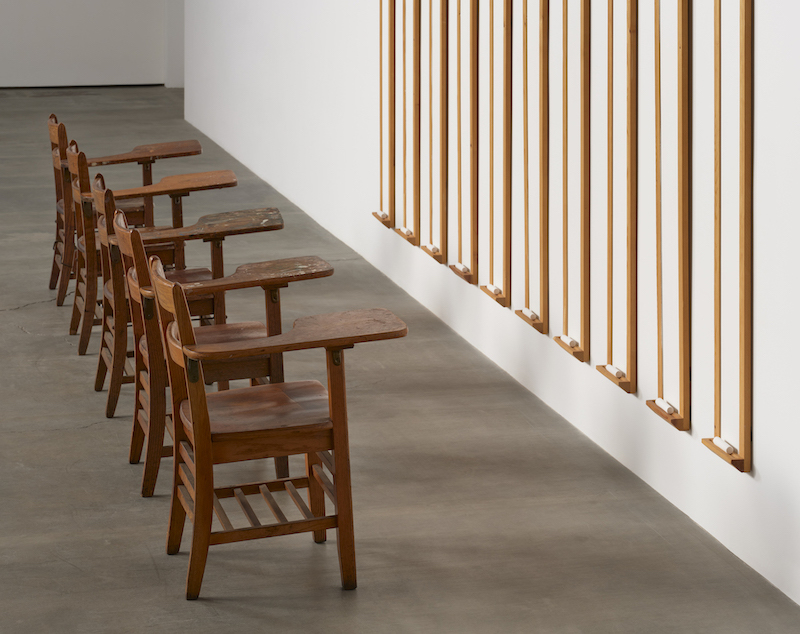
Gary Simmons, “Disinformation Supremacy Board” (detail), 1989, ten white boards, chalk, and five desks, 104 × 172 × 60 inches, photo by Keith Lubow, courtesy of the artist and Hauser & Wirth © Gary Simmons.
Gary Simmons Poses a Set of Questions
WW: This is the first comprehensive career survey of the artist. Given that, what kind of key themes of the artist’s work did you want to present to viewers?
RM: Gary’s work poses a set of questions that couldn’t be timelier: How is our shared past remembered? Which histories have we been taught, and which have we been made to forget? His work underscores the importance of recognizing the differences between the past, collective memory, and the historical record. Particularly with regard to questions of race and identity, these three things are not the same; yet they have each helped shape the world we live in. So it’s important that we acknowledge these things, especially today, at a time when our society’s sense of a shared past is as fractured as it has ever been, when history is being contested as hotly as it has ever been.
WW: Simmons works in sculpture, painting, photography, works on paper, and installation. How did you want to showcase the breadth of the artist’s practice?
RM: Throughout his career, Gary has pivoted nimbly back and forth from sculptural installations to enormous wall drawings, paintings, and drawings on various surfaces, as well as ephemeral public works—even a skywriting piece! Despite this variability, there is an incredibly consistent through line in terms of the conceptual approaches and subjects that enervate his production. In terms of the exhibition, this variability creates a beautiful sense of rhythm and texture.
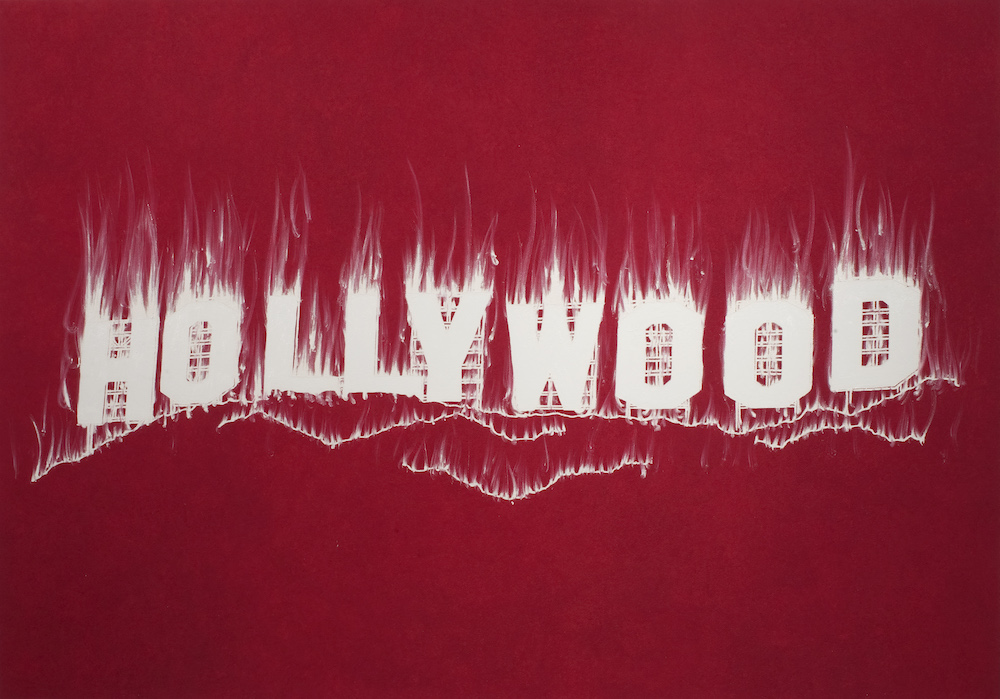
Gary Simmons, “Hollywood,” 2008, pigment, oil paint, and cold wax on canvas, 84 × 120 inches, Rubell Museum, © Gary Simmons.
Gary Simmons Creates On-Site Drawings for “Public Enemy” at PAMM
WW: There will be a number of large-scale wall drawings created by the artist on-site. Can you tell us about those?
RM: The exhibition includes four wall drawings executed on-site. One of them, boom, which is on loan from MoMA in New York, represents Gary’s earliest forays into the wall drawing format, underscoring the connection between this format and his themes of the fleetingness of memory and the importance of remembering even the darkest episodes in our history.
In the “1964” suite, Gary incorporates fragments of cinema and architectural history, setting them against bold color fields of red, green, and blue. Like Simmons’s other works, “1964” holds shifting, dissolving references to a complex visual culture. The color palette references the RGB of color television, a visual medium that quickly came to shape public consciousness when it first arrived in the mid-1960s, while the subjects of the works all hint at the political nuances of visibility—from the absolute transparency implied by Philip Johnson’s 1949 Glass House to the 1964 World’s Fair’s vision of a city experienced from a passing car to Alfred Hitchcock’s attempt to render vision physical in Marnie (1964). Simmons pictures all this in a style that hovers between presence and absence, emphasizing the ambiguities of vision and memory.
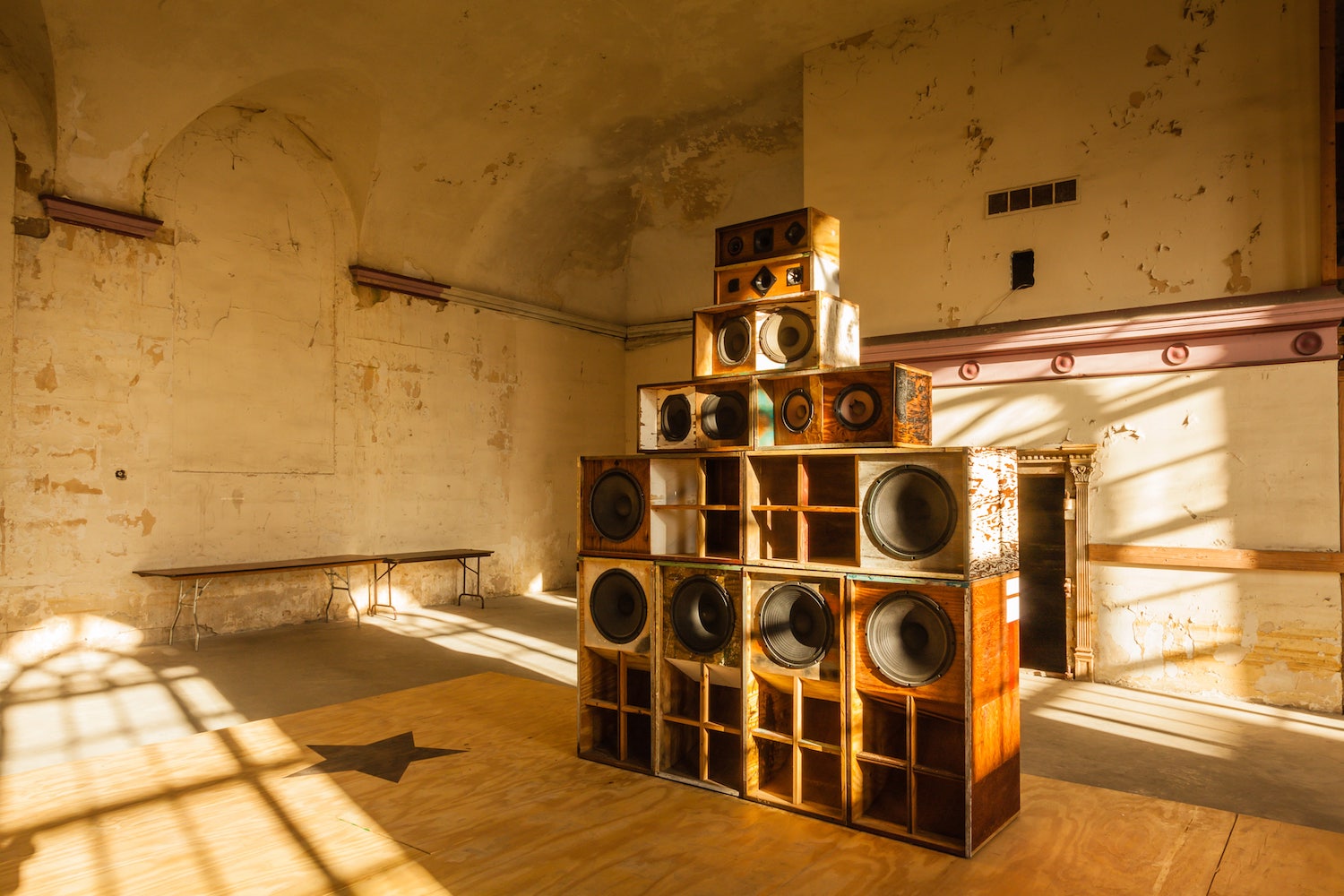
Installation view of “Gary Simmons: Recapturing Memories of the Black Ark” (2014-15) at Prospect 3, New Orleans, Louisiana (October 25, 2014–January 25, 2015), photo by Scott McCrossen/FIVE65 Design, courtesy of the artist and Hauser & Wirth, Los Angeles, © Gary Simmons.
WW: Was there a greater understanding you arrived at in working with Simmons about his practice while working on this show?
RM: The biggest realization I had is that Gary’s work is as much about what’s missing as it is about what it depicts. The void-like settings that frequently appear in his work—empty stages and platforms, childless classrooms, decommissioned cinemas, cavernous ballrooms—stand as powerful metaphors for the kinds of spaces in which the Black body is frequently placed on display yet already, in the immediacy of visual perception, erased and replaced with stereotypes and biases. Gary’s work also helped me understand the degree to which these spaces have also functioned historically as sites of resistance. Think, for example, of how someone like Jack Johnson or Muhammad Ali utilized the spectacle of the sports industry as a stage for protest and social progress.
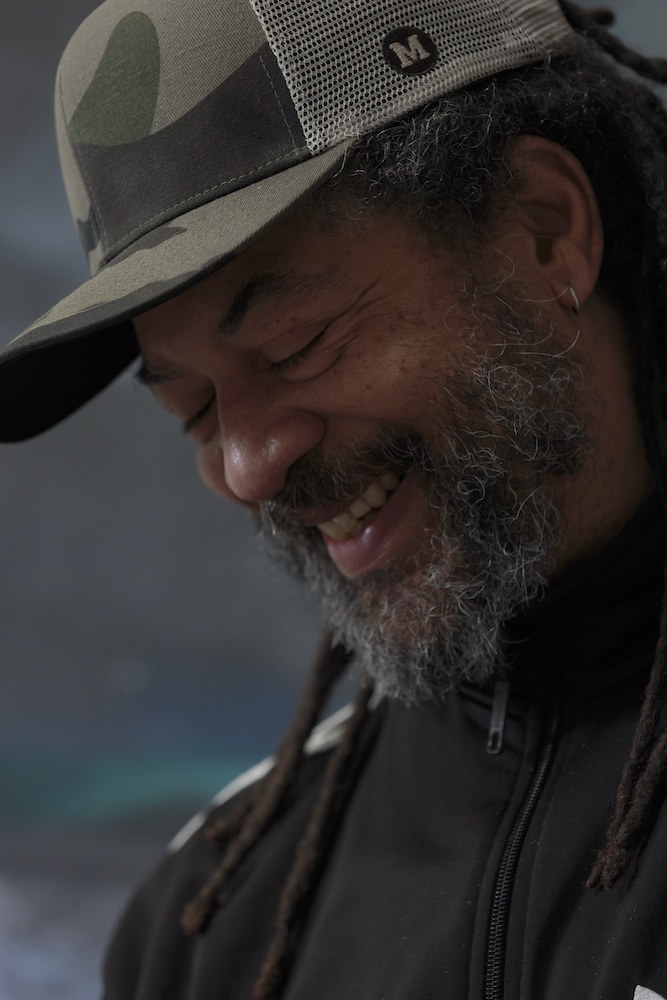
© Gary Simmons. Photo: Tito Molina/HRDWRKER, courtesy of the artist and Hauser & Wirth.



